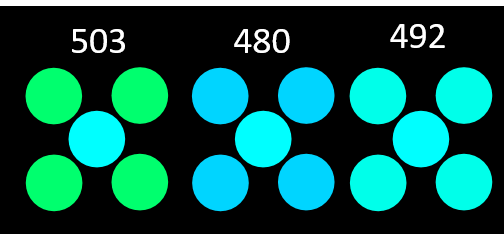We all know that our brain plays a role in how we perceive colors, well I had been noticing how in my work room with black walls my sharp 490 looks bright blue but out my window at night in the bushes and grass it looks blue/green.
Well try this, I looked at the 490 in a fog filled room and it looked blue, then a ndb7875 that's 445nm alone and that 445 looks down right purple, so I turn on the 490 next to the 445 and the 490 looks green/blue, turn off the 445 and the 490 looks blue, turn on the 445 along with the 490 and the 490 looks green/blue, 445 off and the 490 looks blue.
It's really something to see it change in real time...well my perception changes in real time because of the surrounding contrast, try it

----edit----
Always set up your lasers with your proper laser safety glasses on, then you can conduct your experiment with everything safely secured, don't take any risks with your vision as there is still so much that can NOT be repaired, a moments mistake can last a lifetime.
It should go without saying but I will anyway, I terminate a high power laser such as a ndb7875 into a beam stop that blocks my view of the spot in the above mentioned experiment, I am only observing the beam.







